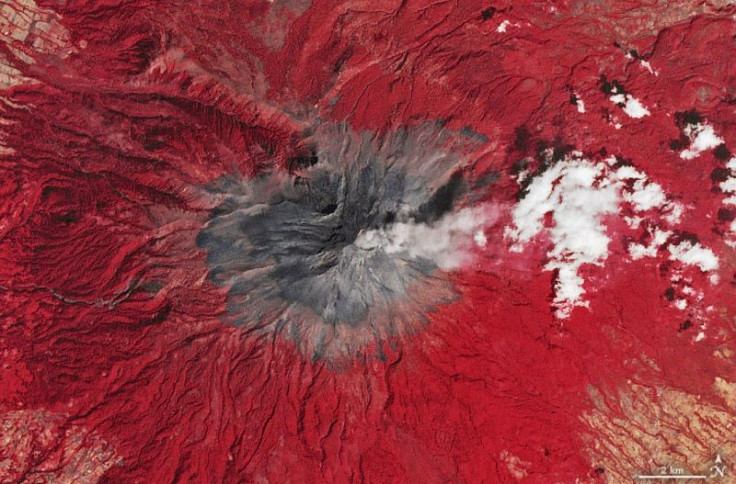NASA Satellite Image Shows Activity In Mexico's Restless Popocatépetl Volcano

KEY POINTS
- Popocatépetl volcano erupted last Jan. 9 and it has been erupting since
- NASA's Terra satellite captured an image of volcanic activity at the Popocatépetl's summit
- Popocatépetl is one of the most active volcanoes in Mexico
A NASA satellite captured an image of volcanic activity in Mexico's restless Popocatépetl volcano. According to NASA Earth Observatory, it has been erupting since January 2005.
Satellite Image
The Advanced Spaceborne Thermal Emission and Reflection Radiometer on NASA's Terra satellite captured a false-color image of plumes venting from the summit crater of Popocatépetl volcano. In the image, the vegetation surrounding the summit appears to be red because the image combines infrared, red and green wavelengths.
The image was taken by the satellite on Feb. 25, 2020, just about two months after the Jan. 9 eruption, when the volcano spewed lava and sent up a column of smoke about 2 miles (3 kilometers) into the air. No one was hurt due to the eruption but officials issued a yellow alert, which prompts people tp prepare important documents, perform drills and be aware of the locations of temporary shelters.
Throughout February, The Global Volcanism Program, as well as Mexico's National Center for Prevention of Disasters, reported up to hundreds of steam and gas emissions, gas eruptions and ash ejections from Popocatépetl.
Popocatépetl Volcano
Since the Spanish arrived, Popocatépetl is said to have erupted about 15 times and, before the European invasions, its eruptions were large enough to bury Aztec settlements and even entire pyramids in mudflows.
Volcán Popocatépetl is actually the Aztec word for smoking mountain but locals also affectionately call the volcano El Popo. It was dormant for over 70 years but it came back to life in December of 1994.
Since then, it has been producing powerful explosions at irregular intervals, erupting in March and October of 1996, April 1997, and in December 2000 when thousands of people were forced to evacuate. Today, it is one of Mexico's most active volcanoes.
"The volcano has been erupting since January 2005, with near constant venting from fumaroles, punctuated by minor steam, gas, and ash emissions," NASA Earth Observatory said.
Stratovolcano
Popocatépetl is a stratovolcano, which means that it is a part of the largest group of volcanoes on Earth. Stratovolcanoes are characterized by eruptions of half lava and half pyroclastic material, with its lave being comprised of dacite and andesite. Because the lava that stratovolcanoes produce is more viscous, they allow gas pressures to build up to high levels, making them prone to suffering explosive eruptions.
Although stratovolcano eruptions are not as explosive as caldera complexes, they have, by far, caused the most number of casualties of any type of volcano.
Other examples of stratovolcanoes are Mt. Pinatubo, Mt. Fuji and Mt. St. Helens.
© Copyright IBTimes 2025. All rights reserved.






















